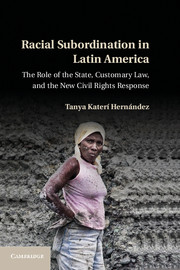Being Black: Aboriginal Cultures in ‘settled’ Australia
Aboriginal Studies Press
1988; Reprinted 1991
288 pages
240×170 mm
ISBN: 9780855751852
Edited by:
Ian Keen, Visiting Fellow
School of Archaeology and Anthropology
College of Arts and Social Sciences
The Australian National University

This volume brings together results of research by anthropologists on the social life of people who used to be labelled ‘part-Aborigines’ or ‘urban Aborigines’.
Issues discussed include bases of identity, ties of family, structure of community, ways of speaking, beliefs and feelings about country, and attitudes to the past.
Contents
- Acknowledgements
- Foreword by Marie Reay
- Contributors
- 1. Ian Keen / Introduction
- 2. Diane Barwick / Aborigines of Victoria
- 3. Barry Morris / Dhan-gadi resistance to assimilation
- 4. Julie Carter / Am I too black to go with you?’
- 5. Jerry Schwab / Ambiguity, style and kinship in Adelaide Aboriginal identity
- 6. Diana Eades / They don’t speak an Aboriginal language, or do they?
- 7. Jeremy R. Beckett / Kinship, mobility and community in rural New South Wales
- 8. Chris Blrdsall / All one family
- 9. Basil Sansom / A grammar of exchange
- 10. Gaynor Macdonald / A Wiradjuri fight story
- 11. Marcia Langton / Medicine Square
- 12. Patricia Baines / A litany for land
- 13. Peter Sutton / Myth as history, history as myth
- Index
1. Ian Keen Introduction
According to the perceptions of many people including anthropologists and other researchers, Aboriginal people of mixed descent classified in earlier decades as ‘part-Aborigines’, have no distinctive culture (eg Bell 1964,64; Barwick 1964; Beckett 1964; Rowley 1971; Hausfield 1977, 267; RM Berndt 1979, 87; and see Read 1980, 112). Fink (1957, 110), for example, has judged that the Aborigines of a New South Wales town simply possessed a common group identity as ‘black’ and an opposition to white people. In Eckermann’s view (1977), the Aboriginal people of a southeast Queensland town have been assimilated and integrated, having a mode of life typical of working class culture (see also Smith and Biddle 1972, xi), To the Berndts (1951, 275-76; Berndt 1962, 88), the Europeanisation of so small a minority has seemed inevitable.
In contrast, others (and sometimes the same authors writing at different times) have detected a distinctive, even unique, culture or way of life, with its own folkways, mores and beliefs (Calley 1956; Bell 1961, 436-37; Smith and Biddle 1972,124; Howard 1979, 98; Crick 1981). Langton (1982, 18) has remarked that ‘loss of culture’ should not be a matter of faith, but of investigation. Indeed, much of the substance of the publications cited above, as well as the results of current research, show that many features of the social life of these people are distinctive, and also display marked similarities to aspects of the cultures of Aboriginal peoples whose social lives have been changed to a lesser degree by the process of colonisation. Calley (1956, 213) wrote that the people of mixed Aboriginal descent possessed a society ‘leaning heavily on the logic and outlook on life of the indigenous traditions’ yet quite well adapted to the white community that surrounds it.
It was my familiarity with some ongoing anthropological research into the social life of Aboriginal people of southeast Queensland, New South Wales and the southwest of Western Australia, that led me to invite contributions to a volume on continuities in the culture of Aboriginal people living in what Rowley (1971, vii) called ‘settled’ Australia. The closely settled regions, by contrast with what Rowley termed colonial’ Australia, dominated by pastoral production, are those which have been most radically transformed by people of European origin. They lie mainly in the southeastern and southwestern parts of the continent, extending on the east coast north to Cairns, and north to Carnarvon on the west coast, The category should also include Darwin, the major European and Asian settlement of the north.
This volume (Being Black), brings together some of the results of a continuing interest among anthropologists in the social life of people who used to be labelled ‘part-Aborigines’ or ‘urban Aborigines’, Studies burgeoned during the post-war decades when ‘acculturation’ was a major anthropological interest, although research dwindled somewhat through the 1970s, Meanwhile research by geographers and economists has greatly extended our knowledge of the social and economic conditions of Aborigines of these regions, and the new Aboriginal history has revolutionised our perceptions of Australian history, Aborigines themselves are increasingly writing (and making films and videos) about their own lives (eg Bropho 1980; Clare 1978; Davis and Hodge 1985; McLeod 1982; Miller 1985; Mum Shirl 1981; Pepper 1980; Perkins 1975; Rosser 1978; Simon 1978)…
Read the entire Introduction here.



